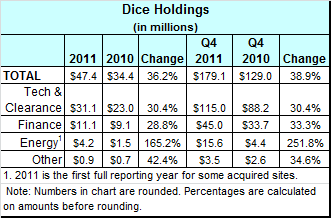By Stephen M. Shapiro
Leaders of organizations often use the expression “Think outside the box” when urging their employees to innovate. The belief is that eliminating constraints and allowing people to think freely will increase creativity.
Although this tabula rasa, or “blank slate,” method of innovation is conventional wisdom, this unbounded approach actually reduces creativity and leads to abstract or impractical solutions. A television scriptwriter in Hollywood once told me that he actually liked the idea of “creativity within constraints,” as it gave him a starting point and then he could “riff” from there.
Instead of telling your employees to think outside the box, give them a “better box” to innovate inside of. These constraints will actually increase creativity and lead to useful solutions.
Albert Einstein reputedly said, “If I had an hour to save the world, I would spend 59 minutes defining the problem and 1 minute finding solutions.” In my experience, most companies spend the full 60 minutes finding solutions to problems that just don’t matter.
Well-defined challenges guide innovation efforts, provide useful constraints, and define that “better box.”
Challenge-driven innovation
All companies have challenges. They can be technical challenges on how to create a particular chemical compound. They can be marketing challenges on how to best describe your product to increase market share. They can be HR challenges around improving employee engagement. Or they can be process improvement challenges.
Let’s face it: Your organization has no shortage of problems and you can find these challenges everywhere — from your customers, employees, shareholders, consultants, vendors, competitors, and more.
An organization’s ability to change (i.e., innovate) hinges on its ability to identify and solve these challenges.
Why challenge-driven innovation?
There are a number of inherent advantages to using a challenge-driven approach over an idea-driven approach to innovation:
- Challenges are the best way to ask your employees, customers, or any community for help. It allows them to focus their energies on finding solutions that will ultimately be relevant to the needs of the organization.
- Because of the nature of challenges, there are tools to evaluate the amount of time spent finding solutions. When challenge-driven innovation is done properly, you can measure the ROI of each challenge and the overall program.
- With a challenge-driven approach, you can assign owners, resources and funding, evaluators, and evaluation criteria before investing the valuable time of employees and others.
- Owner/sponsor — In nearly every situation, a challenge has a home; someone wants this problem solved. Therefore, assign the owner of the challenge up front. This ensures that when you get a solution, you can move things forward quickly.
- Resources and funding — To implement any solution, you will need people and money. Given the importance and scope of a challenge, allocate these resources up front so that when a solution is found, you don’t need to scramble.
- Evaluators — When solutions are submitted, you will want a team of people to evaluate the submissions. Have evaluators in place who understand the big picture and will help ensure that the best solutions are selected.
- Evaluation criteria — This one is important. Establish the evaluation criteria before posing the challenge, thereby creating a self-vetting process. This helps the people providing solutions know the boundaries that their solutions must meet, preventing fluffy or irrelevant answers.
Idea-driven vs. challenge-driven
The idea-driven approach to innovation does not allow for any of the above. With well-defined challenges, all of them are possible.
The difference between the idea-driven approach and the challenge-driven approach is analogous to the difference between two fishing techniques.
Idea-driven approaches are like a fisherman choosing a random spot in the middle of the ocean and casting an extraordinarily expansive net. While using an untargeted approach like this might yield some fish, that fisherman will also collect shoes, tires, seaweed, and other undesirable items. And the fish he does catch will probably not be the specific type he was looking for.
Contrast that with a fisherman who purposefully locates a school of fish and then deliberately selects the appropriate rod, reel, line, leader, bait, and hook for catching exactly the type of fish he wants, effectively minimizing waste and maximizing the effect of his efforts. As the old expression goes: “If you want to catch fish, go where the fish are.” This is the challenge-driven approach.
Establishing boundaries does not necessarily put constraints on innovation efforts. In actuality, if done correctly, it has the capacity to dramatically enhance creativity and increase organizational effectiveness.
So the next time you are tempted to say, “Think outside the box,” think again.
Excerpted from Best Practices Are Stupid by Stephen Shapiro by arrangement with Portfolio, a member of Penguin Group (USA), Inc., Copyright (c) Stephen Shapiro, 2011.
